
Farmageddon’s controversial exposé of modern factory farming methods reignited the debate about large-scale farming. Why does size matter so much? We asked four experts on both sides of the debate – including Farmageddon author Philip Lymbery – for their views.
A note on methodology: As with all of our Views from the Top Q&As, all four panellists were sent the same questions and provided written answers via email. Panellists were not shown each other’s answers prior to publication.
These are their full, unedited responses.
An edited version of this Q&A was published in the print version of The Grocer on 26 April.
Our panel of experts:
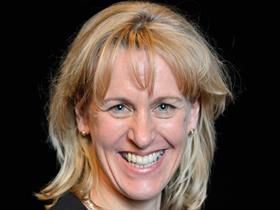
Minette Batters, deputy president of the National Farmers Union (NFU)

Philip Lymbery, CEO of Compassion in World Farming and co-author of Farmageddon
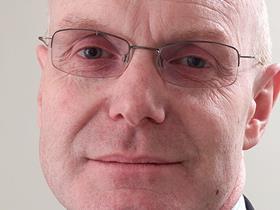
Andrew Saunders, agriculture director at Tulip

John Meadley, chair of the Pasture Fed Livestock Association (PFLA)
Why is large-scale farming such an emotive issue?
Minette Batters: I think it’s because of the perceptions that people have about large scale farming and the concern that there will be a mass expansion of large scale farming in the UK. The reality is that the overwhelming majority of farms in the UK are family farming businesses (over 90 per cent in fact) with an average size of 77 hectares.
Philip Lymbery: We need to get one thing straight; big doesn’t automatically mean bad. It’s not so much scale that matters, it’s the nature of the operation. I’ve seen backyard farms in China for example that were just as awful as any mega-operation. It is large-scale industrial animal agriculture that is emotive, because of the serious animal welfare, environmental and human health problems often associated with it.
Andrew Saunders: There is clearly a perception that ‘large-scale’ farming is automatically bad for the animals and the environment and doesn’t deliver value to the consumer however this is very much based on emotion rather than science and reality. Similarly the perception of what is large is often inaccurate in the context of modern farming methods.
Tulip’s co-operative ownership structure means that it is uniquely placed to lead and influence farming and husbandry methods, ensuring they continue to evolve in order to deliver cost effective increases in productivity without any compromise on quality or animal welfare standards.
John Meadley: Concerns about large-scale farming often seem to surface where the production of animals is involved, but are also linked to some intensive horticultural crops such as strawberry production. Large scale projects such as the proposed dairy farm at Nocton or pig production unit at Foston generate a strong response. Here the public is suddenly faced with a model of farming that appears to be almost completely at odds with the perception of farming and food production that they have grown up with and belies the pictures of contented, grazing cows found on packs of butter.
The public’s concerns tend to arise due to the intensification of production (where animals are generally less able to express their natural behaviour) rather than simply scale of operation . Those with more knowledge of ecology regret the loss of biodiversity, the reduced soil organic matter levels, the eutrophication of waterways and the loss of balance between livestock and the land that sustains them. Those with concern for community regret the concentration of resources in fewer hands, that farmers are becoming increasingly invisible, and the loss of employment on farms that would keep the rural areas functioning as working communities
The fiercest debates tend to be concerned with planning issues. The same passions are far less obvious in decisions made at checkout, but this may change as more information becomes available to consumers about the provenance of their food.
What are you and your organisation doing to foster a more constructive debate between campaigners and industry?
Minette Batters: It’s important that we do have a constructive debate about how farming has changed and will go on changing as it responds to the demands of an increase in the number of people that need to be fed in this country and around the globe. In my view taking polarised positions and shouting at each other leaves consumers confused and risks the facts being lost in the heat of emotion. I want to have an open and honest dialogue with everyone that has an interest in the future of farming where we discuss the facts not the myths. There will be a lot that we can agree on and where we disagree we need to make sure that it’s based on the practical realities of farming. As an NFU we have always sought to engage with campaigning organisations in as constructive a way as possible – sometimes it hasn’t been easy to do that because of the positions that some organisations take but we’ve always believed that it is better to talk than not.
Philip Lymbery: Speaking for Compassion in World Farming, I do feel there is much constructive dialogue and indeed a growing level of cooperation and partnership between civil society interests and the food industry. At Compassion, we place a lot of emphasis on positive engagement with the food industry, particularly large retailers, food service and manufacturing companies. The tip of this iceberg of our work can be seen in the Good Farm Animal Welfare Awards, where we publicly award companies making commitments to improve animal welfare; things like going cage-free on all their eggs for example, or committing to only milk from cows allowed seasonal access to pasture.
I am particularly proud of the Beyond Calf Exports Stakeholder Forum. A ground-breaking initiative with the RSPCA, where we brought stakeholders together throughout the beef, dairy and retail industry to reduce live calf exports in a way that delivered benefits for all. It has since been cited as a model of stakeholder cooperation and a powerful tool for the future.
Andrew Saunders: Tulip plays an active role within the key industry bodies that engage directly with campaigners and we meet regularly with NGO’s to listen to their concerns and to update them on the work we are doing to address the issues they have raised.
John Meadley: Many high-profile campaigns tend to focus on problems and may leave others to develop the solutions. This can leave farmers feeling embattled, particularly because farming today is largely shaped by economic pressures and subsidy policy rather than by farmers’ personal aspirations to manage the land for the next generation. The issues highlighted in Farmageddon will be dismissed by some, but they demonstrate a trajectory that is leaving farming and food production ever more vulnerable to both market and ecological shocks.
A typical campaign might, for instance, highlight the deep concerns around the routine or prophylactic use of antibiotics, which could be dismissed by advocates of intensive livestock production as being alarmist. However, antibiotic resistance is a real threat to both farming and to society and the technologies that have kept such problems at bay for the past 30 years are now running out of options to deal with evolving pathogens. It therefore makes sense for everyone who has an interest in food to look at the potential solutions together.
The role of the PFLA here is not to campaign but to demonstrate the potential of a production system where animals are less stressed, are able to self-medicate and are fed on their natural diet rather than competing with humans for cereals. Pasture typically has high organic matter levels in soils and sequesters at least as much carbon per unit area as rainforest. These are values that have been largely ignored in recent years but which are well placed to play a more significant role in tomorrow’s farming landscape.
What action would you like to see from other people in the supply chain, including retailers?
Minette Batters: All parts of the supply chain, including retailers have a responsibility to be open and honest with the public about farming as this is the way in which we encourage consumers to consider some of the issues that are facing us today and some of the decisions that we have to take about the future of farming to ensure that we can continue to provide food at value for money prices. I’d like to see all parts of the supply chain engage in that debate from the perspective of the importance of farming in our national interest.
Philip Lymbery: The debate is shifting from being centred on farming to being more about the kind of food we want. Do we want unhealthy, saturated fat-ladened industrially produced food that comes at the high price of a diminished countryside and poor animal welfare, or do we want healthier, countryside-friendly, higher welfare food?
I believe food companies have a real opportunity to show leadership in the consumption of food produced from the land - from farms - instead of animal factories. Making policy commitments to sell or use only cage-free eggs, milk from seasonally grazed cows, pasture-fed beef; these kind of commitments will not only motivate consumers and win awards from Compassion in World Farming, but will help shape a better, healthier food system for all.
Andrew Saunders: There is a real opportunity for us to get on the front foot by engaging with issues in a pro-active rather than responsive manner in order to get reasoned, balanced messages across to the consumer.
John Meadley: Farming is not an industry that can be switched on and off at a whim and be expected to react instantly. The production cycle for a cow doesn’t start when the milking machine is switched on, but two years previously when the breeding of that cow was carefully selected. Reducing prices to cool production often results in a ruthless culling programme – a wasteful and irreversible step.
A strategy of planned over-production keeps farm-gate prices pinned to the floor and whilst expansion is actively encouraged when demand exceeds supply it is seldom coordinated, leading to stringent cuts at times of oversupply in the next part of farming’s boom-and-bust cycle. Price alone is a blunt instrument to control production and with such long lead times price cuts often do little to stem production, but instead are reflected in the inability to invest in good veterinary care, the general welfare of animals and to support the kind of business that will encourage future generations of farmers.
Efficient production and high standards of animal welfare are complementary - not conflicting - objectives. Both require long term investment and stability in order to plan effectively. That requires a coordinated strategy involving the whole supply chain - including retailers - and the most effective method of ensuring this is through transparency and long-term commitment to their suppliers.
Farmageddon claims to lift the lid on the “true cost of cheap meat” – is there a cost and if so, what is it?
Minette Batters: The premise to the book is that global society, struggling to feed a growing population on ever-decreasing acres of land, is being duped about the benefits of agricultural intensification. The opinion appears to be that all agricultural intensification promises is to bring environmental destruction, downward social mobility, poor quality diets, obesity, corruption and a general failure to protect animal health & welfare. I don’t recognise this vision of farming in the UK. What I do recognise is that hard working farming families make a positive contribution to our countryside, our animals’ health and welfare and our food production. Ultimately farmers will produce what consumers demand and currently consumers demand that they have quality meat at value for money prices and farmers take pride in producing that meat while abiding by some of the best standards of production in the world.
Philip Lymbery: During three years of investigation for Farmageddon, I became struck by the link between industrial farming and drastic affects on the countryside, health and the quality of our food. The hidden costs of industrial farming can be seen in dramatic declines in once common farmland birds, bees and butterflies. It can be seen in health risks, like feeding half the world’s antibiotics to farm animals, largely to prevent disease in fundamentally unhealthy factory farmed conditions, contributing to the rise in antibiotic resistant super-bugs.
A further cost is in the quality of the food itself; defenders of factory farming often say that it’s needed to provide food for the poor. Yet, meat, milk and eggs from industrial farms often contain more saturated fat and lower levels of key nutrients than their higher welfare alternatives. As compared with factory-farmed produce, pasture-reared beef and free-range and organic chicken have up to 50 per cent less fat. Through Farmageddon, I came to ask the question; why is it right to expect people on lower incomes to have to feed their children on unhealthy, factory farmed food?
Intensification is often justified on grounds of needing it to feed the world. Farmageddon shows the reverse is true, making it harder to feed the world. The most overlooked form of food waste is not what we throw in the bin but what we feed to industrially reared animals; grain enough to feed 4 billion people is fed to livestock worldwide, squandering 70% of the calorific food value in the process.
Andrew Saunders: The book doesn’t in our opinion add anything new to the debate on intensive farming, rather it has brought together CIWF’s position on a number of existing issues such as farming size, welfare, environmental impact and food quality. A substantial proportion of the book’s content is evidenced by information from a wide variety of countries, sources and time frames and doesn’t relate to either the UK or EU farming systems, and although these two regions are subject to criticism they do appear to come out of the book as being seen as better than other countries.
John Meadley: The farming industry is not alone in deferring costs into the future. Nuclear power is price-competitive when based purely on operating costs, but not when the costs of decommissioning are added in – a deferred cost currently borne by the public purse. Few would deny that our warming planet reflects our long—lasting love affair with fossil fuels, whose retail price has reflected neither its inherent energy value nor the damage to the planet and to human health. Our children and grandchildren will pay the deferred cost.
Western diets continue to add an increasing burden to the costs of providing health care and yet the economic power of food companies ensures that change is only brought about when they can benefit from the change. The value that we place on meat reflects the value that we place upon the life of the animal that produced it. By implication, cheap meat and the associated levels of waste suggest that we have become sufficiently distanced from the means of production that we are prepared to no longer treat farm animals as sentient beings. If that is true, it is a sad reflection upon contemporary society.
None of these costs – the effect of a poor diet, environmental degradation, human hunger resulting from livestock consuming a third of the world’s cereal harvest and the reduced efficacy of antibiotics resulting from overuse in intensive livestock production – are reflected in the price paid at checkout. The true cost is deferred, and will be paid in the future - with interest.
Is large-scale farming necessary for our food security, and why?
Minette Batters: Large scale farming is one of a number of ways in which we can help ourselves become more food secure and let’s be clear that there will always be a range of farm sizes that will continue to supply food to consumers. But naturally some farmers, as they have always done, will want to expand their production because that’s the best way in which they can get the best return on capital for the money and labour they’ve invested. But increasing our food security isn’t just about the potential to increase farm size. It’s about using technology, optimising inputs and increasing yields. It’s about equipping farmers with the tools that will enable them to farm efficiently in tune with the environment.
Philip Lymbery: Scale of farming isn’t the biggest factor here, it is more about the nature of the operation; industrial or extensive; whether animals are produced in factory farms or reared on the land. Industrial livestock production has a negative influence on food security. Animals reared on the land can convert food that people can’t eat – like grass – into things we can eat; meat, milk and eggs, thereby adding to the global food basket. Taking animals off the land and rearing them industrially means that they then compete with people for food; huge amounts of human-edible crops – cereals and soya - are fed to factory farmed animals.
Andrew Saunders: The proportion of food we produce as a country has, and continues to, decline, our food self-sufficiency peaked during 1984 at 78% and has gradually dropped to today’s figure of around 62% with much of what we import to bridge the gap produced at lower standards and costs, ultimately undermining what we are trying to do here in the UK. Latest figures show that the UK’s food deficit has doubled in the last eight years with this trend looking set to continue, the current value of meat product imports into the UK is around £5,987m whilst our exports sit at around £2,151m. However large scale farming provides the opportunity for the UK to compete – and given our high standards of monitoring and auditing ensures there is no compromise in animal welfare, environmental standards or employment rights.
John Meadley: Long-term global food security is determined by biological productivity, by our choice of enterprises (food, feed or biomass), by the amount that is wasted and by our political attitude towards social equality. If, as now, we waste one third of all food that is produced and feed a third of all cereals inefficiently to livestock, then there are two obvious steps that can be taken to address food security. Since land is the ultimate scarce resource, judgements about whether or not we can feed ourselves in the medium to long term are best made around biological productivity rather than around return on financial capital.
Large scale farming tends towards simplification, specialisation and consistency, leading to a lack of diversity, flexibility, or poor resilience to unforeseen or unpredictable changes in climate or the market. It also generally involves internationally traded commodities and may be poorly equipped to respond to regional or even national market trends.
Productive land in East Anglia is being used to grow maize for anaerobic digestion plants whilst wheat grain is being burned for fuel in power stations. Both rely heavily upon publicly-funded subsidies and yet make little sense in terms of efficient resource use or food security.
In terms of biological activity (that is the amount of energy and protein that can be produced off a given area – which is ultimately what counts in terms of food in bellies) there is no evidence that large-scale farming is more productive than small-scale farming – whether to feed people, cars or livestock. There is plenty of evidence that small-scale farmers, with access to adequate capital and markets, can be very productive. The IAASTD report (International Assessment of Agricultural Science and Technology Development) came to the conclusion that the future rests with smaller, mixed farms adapting effectively to local conditions through locally bred varieties and applying local knowledge.
Are meat and fish prices going to have to rise if the UK doesn’t embrace large-scale farming? Does any public concern over large scale farming override price, meaning consumers will be willing to pay more?
Minette Batters: There are a number of factors that influence the retail price of meat and fish such as the cost of transport, energy, labour, and packaging and also the pricing strategy of the retailers themselves. It is also the case that if demand for meat and fish outstrips supply that this will have an influence on the prices that consumers have to pay but it is only one factor in a complex picture. In the end consumers will decide what they want to buy and eat but what I’m interested in is ensuring that there is a constructive debate about some of the decisions and trade-offs that will have to be made if we’re going to continue to supply consumers with the food they want to eat at prices they can afford to pay.
It’s also important to point out that livestock finished predominantly on grass will take longer to finish that intensive beef production - that should be about choice - but there will be a cost attached for slower produced proteins. This is why NFU is asking government for a Food Plan. After all what is more important than food? As food producers we must be preparing to meet the challenges of a growing world as highlighted in the recent IPCC report.
Philip Lymbery: We are already paying a high price for so-called ‘cheap’ food; it’s just that so much of it is hidden. As it is, people pay three times for food; once at the check-out; second, through taxes used to subsidise farming; and thirdly for the clean-up cost of environmental pollution and increased health bill. What is needed is a sustainable food policy geared toward producing healthy, humanely produced food for all. Consumer choice is another factor here, often hampered by lack of clear labelling. Generally, the more animals are reared on the land with natural, varied diets, the healthier and tastier the food. We instinctively know this, which is why terms like ‘natural’ and ‘free-range’ are so attractive. It also explains why marketers all too often try to mask factory-farmed food behind labels showing false depictions of green fields, small farmhouses accompanied by comforting terms like ‘farm fresh’ and ‘country fresh’. What is needed is labelling that clearly states how meat and milk is produced; this should be compulsory on an EU-wide basis.
Andrew Saunders: There is no getting away from the fact that global food production is going to need to increase dramatically in the next 15 years in line with the rise in world population. As a result, the ‘competition’ for raw materials for animal feed, for human protein and carbohydrate consumption will, over time, force prices upwards and this is likely to be further exacerbated by the impact of climate variability on global raw material supply. Against this backdrop, the need for increased efficiencies delivered by scale and the adoption of new technologies will become essential to avoid price increases and shortages of supply. More affluent consumers in the Western world should not be able to inflict increased costs on those less well off than themselves by limiting the development of larger scale farming. Consumers in emerging nations currently spend a much higher proportion of their disposable income on food although this is declining as their purchasing power increases, whilst in the UK the spend by households on food has been declining and now sits at circa 12% of disposable income, a trend that will inevitably be reversed unless large-scale farming is embraced.
John Meadley: Farming produces the raw ingredients for the food industry and even fairly significant swings in the prices paid to farmers have only a marginal effect on the overall cost of processed foods that make up a typical grocery basket. Food price increases have far more to do with transport and processing costs, speculation and the margins taken at the various stages between the farm and the customer.
Although the market for Pasture-Fed beef is still in its infancy, the evidence from our farmers and retailers suggests that Pasture-Fed can be sold at a price that is on a par with its intensively produced counterparts and provide producers with a fair return and the added bonus of a resilient farming system.
The spectre of higher food prices, or of impending starvation, are arguments that are often promoted to justify the introduction of farming methods that many would otherwise find unpalatable. These arguments are hard to take seriously when so much food is wasted, fed to intensive livestock or burnt to produce energy. Future rises in food prices will reflect levels of wastage, of competition for food and feed and how land is used. Compared with these parameters, the claimed benefits of large-scale farming on food prices will be negligible.
Those concerned about large-scale farming worry about its impact on animal welfare, the environment and human health. What are farmers’ and industry’s best arguments against such concerns?
Minette Batters: I think it’s easy to fall into the trap of thinking big is bad but it’s important to consider the evidence first before jumping to conclusions. There have been a number of independent studies and reports done which show that it is the quality of management and stockmanship which are the main drivers of achieving good standards of welfare and respect for the environment on farms. Our farmers don’t just produce food we also do it with less impact on the environment than was the case in the past; most indicators demonstrate that. We also produce a large and growing variety of different sources of cleaner renewable energy, and through farm assurance schemes such as the Red Tractor, we deliver some of the highest animal welfare standards in the world. But don’t take my word for it - here is the evidence from some of the organisations that have considered this issue:
The Farm Animal Welfare Council has always maintained that stockmanship is the single most important influence on the welfare of farm animals.
FAWC. 2007. Report on stockmanship and farm animal welfare.
“Large scale production of any farm animal enterprise is a controversial issue. The common assumption is that by scaling up the farm enterprise, the welfare of the animals will always and inevitably suffer. The RSPCA’s experience and other evidence indicates that this is not necessarily the case.”
RSPCA. Large scale farming. A position paper on dairy farming.
“… the evidence would indicate a trend towards higher standards of health and welfare on many larger farms due to a generally higher standard of management employed and increased investment in specialist staff, facilities and operating procedures designed to deliver optimum health and welfare.”
Worshipful Company of Farmers, Large Livestock Units Research Report, October 2012
“… any size or system can deliver high welfare, profit and respect for environment and communities – although ‘too big’ can bring diseconomies of scale.”
A Nuffield (UK) Farming Scholarships Trust Report published in October 2013 Can we learn to love the megadairy? Politics, Planning and PR
Waiblinger and Menke (1999) found that there was some correlation between herd size and the human - cow relationship, but that the personality and attitudes of the stockpersons were more important determining factors.
“In fact, if we think of animal welfare as being influenced by such key factors such as staff time and skill, substrate, temperature, feed quality and disease prevention measures, then animal welfare problems may be less a function of the type of rearing system - confinement, semi-confinement or extensive - than of how well it is operated.”
FAO READINGS IN ETHICS 2. Animal welfare and the intensification of animal production. An alternative interpretation. David Fraser Animal Welfare Program
www.fao.org/docrep/009/a0158e/a0158e00.HTM
Philip Lymbery: I’ll leave that one to them.
Andrew Saunders: We need to work harder to educate people and change the public’s perception around large-scale farming through both credible data and by inviting them to visit larger-scale production facilities to see the standards for themselves. At the same time we need to ensure that we maintain and protect standards by putting in place more frequent spot auditing of farms to ensure standards are maintained at all times and regular peer reviews of scientific data produced in large scale farms.
John Meadley: The evidence put forward in Farmageddon is compelling and we have a choice about how we respond to the challenge. It is the belief of the farmers within the PFLA that it is in the interests of neither consumers nor farmers to support farming systems where animal health is compromised or which result in environmental damage. We believe that transparency is the best way to counter criticism or concerns. Each PFLA approved supplier provides information about his/her livestock and farm on a publicly accessible website. He/she is also encouraged to have an “open door” policy and to use tools such as carbon calculators to demonstrate the environmental credentials of Pasture-Fed production.
By far the strongest argument available to farmers and to the food industry is to provide complete transparency about ingredients, sources and means of production; through ensuring that official bodies that make or influence policy are not dominated by corporate interests; and through slowing down the revolving doors that exist between the public and private sectors - which generate deep scepticism amongst the public.
Conversely, farmers and industry often worry that campaigners oversimplify complex debates on welfare and the environment to maximise publicity. How can campaigners demonstrate to industry they are serious about engaging in a factual debate?
Minette Batters: The answer is in your question. If campaigners want to engage in a factual debate they need to put forward their arguments in a rational, honest way which is based on facts not on opinion and they need to engage with the industry rather than conducting megaphone diplomacy. I think some of the tactics in the past have actually put back the debate rather than taking it forward because it confuses consumers even more and leads to suspicion. By all means challenge the industry because we want to show how we’ve improved and what we consider to be best practice but do so in a way that aims to be constructive rather than destructive.
Philip Lymbery: I see it as really important to have an evidence-based debate; that is why I was keen that Farmageddon was well referenced. Food and the way it is produced matters to anyone who eats. Highlighting the serious issues involved is an important function of civil society groups like mine. Of course there are complexities and detail, and these are hugely important, which is why Farmageddon has more than 40 pages of notes at the back; but that detail has a time and a place; it’s often not easy to convey everything in a single sentence or sound-bite, we have to recognise that. Of overriding importance is that people and policy makers, be they public or corporate, are discussing the issues that have a strong bearing on the future of our food.
Andrew Saunders: Campaigners should be more willing to engage in finding solutions to the problems where industry has challenges it admits it would rather not have and invest money they raise from campaigns in these areas. They also need to have greater visibility of production methods used elsewhere so they understand that simply replacing UK production with imported goods is not necessarily the right answer and are able to lobby accordingly.
John Meadley: By their very nature, campaigns tend to have a simple message that often belies the complexity of the issues they are addressing. Whilst it can be useful to raise awareness of an issue, the real work of developing solutions generally has to take place within the same practical and economic constraints that probably gave rise to the original problem. If solutions are to be developed, they have to be addressed by all interests working together – which requires a willingness by all sides to listen to the other’s point of view. More importantly, if those same solutions are to be adopted, they also need to represent a positive step for all those affected by the change, and they need to make economic sense.
How would you define large-scale farming? Is it necessarily intensive?
Minette Batters: I don’t think it’s possible to put an arbitrary figure on what’s defined as large scale because the truth is that it varies from sector to sector. What I’m clear about though is that somehow large scale farming has become synonymous with intensive production and that over the years, the singular goal of farmers has been to become more intensive and upscale, which misses the point that a key way that farming can improve its performance is to focus on efficiency and particularly its use of inputs. Indeed, the last meaningful gains that UK agricultural productivity made were triggered by the extensification of our farming industry. Essentially, using fewer inputs to achieve the same amount of farmed output – reduced fertiliser use, better animal nutrition, and an up skilling in farmers’ own management capabilities all had a role to play.
Philip Lymbery: Large-scale farming is exactly that; large scale. It needn’t be intensive. In Farmageddon, we look at a large-scale farm in Georgia, USA; entirely pasture-based, and one of the best farms I’ve seen. Where it becomes controversial is when it is industrial farming; intensive farming on a large-scale, like mega-dairies where thousands of cattle are kept permanently indoors or in muddy paddocks without a blade of grass in sight. Other examples include battery cages for laying hens, or highly intensive mass production of meat chickens or pigs. These kinds of system tend to thwart natural behaviours important to the animals, causing suffering and poor welfare. I firmly believe that animals should be kept in ways that respect their sentience, their ability to suffer or experience a sense of joy. For truly high welfare, we should be providing conditions whereby animals can experience a positive state of wellbeing; it is not enough to simply ensure the absence of suffering. The good news is that keeping animals in high welfare conditions also produces better quality food.
Andrew Saunders : It is probably best defined as production where there is a significant impact on the local community and environment. Large scale can be extensive also – i.e. beef lots, outdoor pig farms above certain levels, free range chicken farms etc.
John Meadley: Large-scale farming can be an abstract concept used by campaigning groups rather than those within farming. 5,000 acres of Scottish Moorland would almost certainly have a lower impact than 20 acres of strawberry production under polythene, so scale itself is rarely the issue.
Many of the English farming estates that thrived in the second half of the nineteenth century represent some of the best examples of closed-loop production cycles where waste was fully utilised and the nutrient cycles of the various enterprises were interlinked and complementary. Although these must have been considered large scale in their day, their management could not be described as intensive, just highly efficient.
There is nothing inherently wrong in farming the land intensively. Horticulture is more intensive than agriculture – managing individual plants rather than populations of plants. A micro farmer in the eastern Cape of South Africa, using collected rainwater, can produce 2 tons of mixed vegetables a year from a plot 10 x 10 metres (100m2 or 1% of a hectare - far more productive than large scale farming), reflecting his careful management, recycling and replanting.
The American writer Wendell Berry captures the different approaches to farming and food production that distinctions such as scale or intensification fail to reflect. He describes farmers as being either “nurturers” or “exploiters”. The worry with the exploitative approach, whether resulting from the depletion of finite natural resources, the degradation of soils or compromises to animal welfare, is that short-term gain builds up problems that society as a whole and future generations will have to address.
In the UK, what are the most impressive examples of good practice in large-scale farming?
Minette Batters: I’m not going to single out sectors but there are really good examples of large scale farming using advanced technology including satellites to reduce and target the use of agricultural inputs; of businesses investing in the environment on their farms as a part of the expansion of the business; of businesses being carbon neutral while growing crops and actually generating power for the national grid.
Philip Lymbery: Rearing animals on the land in decent conditions needn’t be a small-scale affair. The largest pig breeding herd in Britain is outdoors. I’ve seen plenty of good larger-scale outdoor free range laying hen farms, and meat chicken units in this country. As a nation that is predominantly farmland, two-thirds of which is pasture, Britain is in a perfect position to get animals back on the farm, rather than in factories.
Andrew Saunders: Our own BQP operation is the largest UK pig farmer operating on over 300 farms where this is broken down into smaller scale units providing income for mixed farms, employment and business start-up opportunities for young people, operating at high levels of physical performance and providing consumers with high quality products farmed in a manner sympathetic to the animals and the environment.
John Meadley: It is invidious to pick out particular examples but fourth generation Hampshire farmer Tim May at Kingsclere Estates has taken some radical steps to rebuild soil structure. Finding that yields were static and costs rising on the 2,500 acre arable farm, Tim is reintroducing a true rotational farming system by putting half the farm down to a productive yet diverse mix of grasses and herbs. The leys, mob-grazed by 4,500 sheep, together with beef cattle, pigs and chickens, will increase soil carbon and soil moisture, reduce noxious weeds and allow out-wintering of the flock. The farm will then be 50% grass leys and 50% combinable crops, produced at significantly lower input costs. Much more on this on YouTube at http://bit.ly/Ro8AZN
Ben and Charlotte Hollins on Fordhall Farm (http://www.fordhallfarm.com ) raise cattle, sheep and pigs on its 81 ha. What is remarkable about this farm is that it has 8,000 landlords (community-owned) and provides employment for 25 people (12 full time). It is large-scale in terms of those with a direct interest in its management and shows how farmers can engage positively with the public (through owning a small share in an enterprise) and create rural jobs. Putting people and the long-term future of the land first is radical and bold, but at the same time blindingly obvious, and at Fordhall it clearly works. Kingsclere and Fordhall are both members of the PFLA.
In the UK, what are the large-scale farming practices and developments you are most worried about, and why?
Minette Batters: This isn’t a question for me but what I would say is that I know the time and effort that farmers go to and the hurdles that they have to jump when they are trying to expand their businesses. Farmers care deeply about the responsibilities they have to society and about their role as food producers but they are business people too and they have to be able to make a return on the money they’ve invested in their farms, not least because they want to hand it over in good shape for future farming generations.
Philip Lymbery: A big concern is the rising pressure to farm cattle industrially, be they mega-dairies or ‘battery’ feedlot beef. Pigs and poultry have long been the victim of factory farming but public opinion is now changing that, with a large proportion of Britain’s laying hens and breeding pigs now being kept outdoors. Cattle on the other hand are under pressure to go the other way; indoors and intensive. These systems pose real threats to animal welfare, the environment and food quality.
Andrew Saunders: Compared to the scale of farming undertaken in many other parts of the world we do not believe there is any real cause for concern.
John Meadley:
- Loss of resilience within farming systems that are increasingly dependent on producing a small range of products for a small number of purchasers – increasingly vulnerable to climatic and market fluctuation
- Long-term damage to soil and waterways through loss of organic matter and eutrophication
- The science & research agenda being hijacked by the supply industry interests rather than those of farmers or consumers
- The significant loss of local processing facilities and infrastructure – in terms of the choice of facilities available to farmers, the increasing distances to access them and their ownership being concentrated in the hands of a few corporate interests.
Can you think of an example where you personally – or your organisation – changed your position on a key welfare or environmental issue in response to positive action by campaigners?
Minette Batters: As a lobbying organisation representing the interests of our farmers we take our lead from what our members want.
Philip Lymbery: [Not applicable].
Andrew Saunders: As the UK’s largest pig farmer we continually look to drive standards in order to ensure ‘best practice’, a good example would be the implementation of trough feeding on all our pig breeding units as a result of concern of leaching of feed nutrients into the water course.
John Meadley: Most successful industries begin by understanding what people want to buy and developing the process of production to suit. However, farming seems to be increasingly tempted to mould the market around its production methods, which we believe will ultimately limit its ability to compete and take full advantage of emerging market opportunities.
The reason that the PFLA hasn’t been forced to change its position as a result of campaigning pressure is because we have invested time and effort in trying to understand the concerns that society is raising at an early stage in our planning. Farming must respond to the changing concerns of its customer base if it is to remain competitive and earn public support and respect rather than demand it.
Modern farming methods have done much to improve the efficiency of production, but we mustn’t become complacent and should heed Richard Feynman’s famous conclusion to his report on the shuttle Challenger accident: “For a successful technology, reality must take precedence over public relations, for nature cannot be fooled”.
From a campaigning point of view, can you think of an example where you adjusted the focus of your campaigning in response to positive engagement from industry?
Minette Batters: This is one for the campaigning organisations to answer.
Philip Lymbery: Perhaps the best example is how we worked with leading food companies, farming interests, government and academia to reduce live calf exports and instead promote the rearing of dairy bull calves in Britain for beef or higher-welfare British veal. Until then, veal was seen as a dirty word, associated with veal crates and other poor calf rearing practices. Working with industry, we were able to represent British veal as a way of helping solve animal welfare problems.
Andrew Saunders: N/A
John Meadley: There are aspects of the development of Pasture-Fed where we have had to adopt a pragmatic approach. Whilst we have made significant progress, there is much more still to achieve. We hear a lot about the “industry” position or interests within farming, but it can be difficult to know who is being represented – as the interests being served may be neither those of farmers nor customers.
As with the introduction of any new product or concept within a sophisticated market, there is a significant amount of inertia to overcome, particularly when it comes to local processing infrastructure and the logistics of transportation. Our “Pasture-Tracks” system depends upon full traceability and transparency from the farm to the customer’s table. Despite significant, recent problems within the meat industry, we find there are few processors and retailers who share our desire to see things change.
Early in our development, one of the major retail chains commented that they loved the concept of Pasture-Fed meat and could see its market potential, but as it would raise unhelpful questions about the production systems used for their existing meat products they would resist its introduction. At that point, we knew that there was a potential market for Pasture-fed but also realised that we had to find retail partners who share our values.
We are not in the business of campaigning. Following initial scepticism, we find growing interest because our farmers are demonstrating that they are increasingly immune from fossil fuels, from fluctuating input prices (pasture is not a commodity), are able to finish cattle on time without grain, have lower vet’s bills and are more resilient. Farmers tend to treat campaigning groups and industry hubris with equal scepticism. They are interested in what actually works and that is why Pasture-Fed has such a bright future.







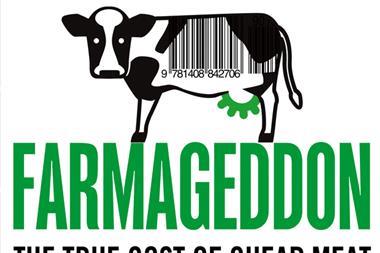



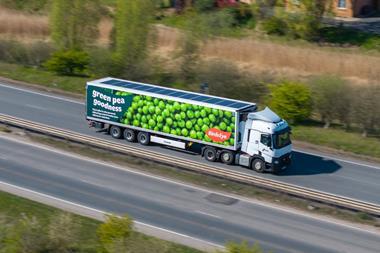






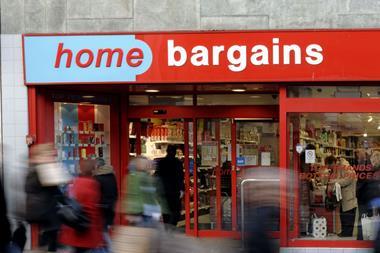
No comments yet